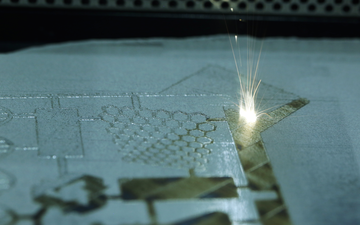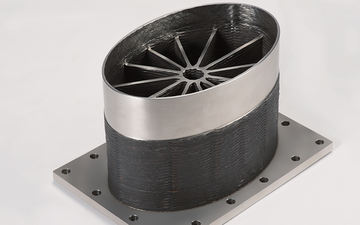- Official BOC UK Online | Industrial Gases | Products & Solutions | BOConline UK
-
Shop
- Industries
- Processes
- Gases & Equipment
-
Solutions
-
Services
-
Health & Safety
-
Contact & Support
- What's Happening
-
Net Zero Strategies
3D Printing
Creating real objects layer by layer
3D printing, rapid prototyping, rapid tooling, rapid manufacturing or additive manufacturing all refer to a process whereby a real object is created layer upon layer from a 3D design. Where formerly only conventional subtractive methods were used for production, three-dimensional objects are nowadays more likely to be printed. Reducing time, cost and waste for prototype production as well as giving the freedom for small-batch fabrication or serial production, the automated 3D printing technology has become a cornerstone for the industry.
Recent developments
This all-new technique of 3D printing or additive manufacturing has progressed greatly in recent years. Today there are several 3D technologies, mainly differing in how layers are built and which materials and bonding agents are used. This exciting development is still ongoing. The growing variety of materials and the refinement of the technology is paving the way for even broader industry applications. 3D printing has now even taken the last hurdle, the challenge of certifying quality for 3D printed products.
Taking 3D printing to the next level – ensuring quality for high-end industries
Freedom of design - Forget the tight working envelopes of conventional manufacturing. If you have the correct gases for additive manufacturing, your prototyping is only limited by your imagination. However small, elaborate or complex your newest designs may be, we can help you realise what was previously impossible.
Structural stability - AM products are created in one piece, which gives them unique stability and strength when properly annealed – an important property in all areas of manufacturing. With the correct gas composition in the chamber, this lets you engineer novel parts that can bear any load and defy any force to stand the test of time.
Lightweight construction - Hollow structures are a massive achievement. The right AM gases allow you to build products with a lightweight and robust cellular lattice at their core. The result: workpieces with all the strength of a conventional product at a fraction of their weight. Perfect for high-end applications like aeronautical engineering.
Surface refinement - Given the right gases and the necessary know-how, AM processes can create products with any desired surface texture, which is especially relevant in the medical field. It is even possible to give different parts of the same product a different finish. Directly from scratch, without complicated post-processing.


